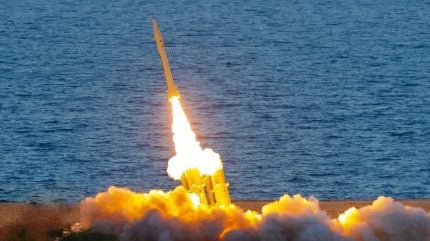
As the fallout continues to settle from the news that Iran has sent stocks of its Fath-360 ballistic missile to Russia for use in its ongoing war against Ukraine, an estimated two-week timeline has emerged before the missile could be first used on the battlefield.
It is understood that the Fath-360 ballistic missile are most likely to be used on battlefield targets in the east of Ukraine, although they could be used to target sites of critical national infrastructure in Ukraine, causing a new element to be added to Ukraine’s already stretched air defence systems.
How well do you really know your competitors?
Access the most comprehensive Company Profiles on the market, powered by GlobalData. Save hours of research. Gain competitive edge.

Thank you!
Your download email will arrive shortly
Not ready to buy yet? Download a free sample
We are confident about the unique quality of our Company Profiles. However, we want you to make the most beneficial decision for your business, so we offer a free sample that you can download by submitting the below form
By GlobalDataUkrainian President Volodymyr Zelenskyy has repeatedly called for the provision of more air defence batteries by Nato allies in order to better protect key infrastructure and military sites.
On 13 September 2024, the UK deputy permanent representative to the UN James Kariuki at a UN Security Council meeting said that Iranian “close-range ballistic missiles” would “soon reach European soil”, following an earlier confirmation from Western powers of Tehran’s latest support of Moscow.
“[The transfer] will increase Russia’s capability to launch short-range attacks on the front lines, enabling it to use more of its long-distance missiles to strike deeper inside Ukraine,” Kariuki said.
In recent weeks, Russian attacks have shifted to conducting waves of long-range missile and loitering munition strikes against sites of critical national infrastructure in Ukraine, particularly against utilities.
The bombardments have also caused significant civilian harm, with the UN verifying more than 35,000 non-combatant casualties so far as a result of Russia’s February 2022 invasion.
According to analysis carried out by Army Technology, Iran has been actively developing both solid-fuel and liquid-fuel rockets as part of its ballistic missile programmes, dating back to the 1980’s, with the Islamic Revolutionary Guard Corps playing a significant role in their development, viewing the missiles as a crucial deterrent against potential adversaries.
Iran possesses several short-range ballistic missiles in its arsenal, designed for distances ranging from 300-1,000km. Among these is the Fath-360, which was revealed and tested in September 2023, and thought to have a range of 120km and a 150kg warhead.
New threat to Ukraine’s battlefields
The new Iranian-provided Fath-360 ballistic missile will also come as something of an unknown entity for Ukraine and its Western backers and could bring new difficulties for the country’s already stretched air defence systems.
While a relatively small number of Patriot air defence batteries have been provided to Ukraine by Nato countries, it is by no means certain that these systems will be able to detect, track, and intercept the Fath-360.
Should Patriot even be able to detect and intercept the Fath-360, such is the paucity of high-end air defence platforms in Ukraine’s inventory, and their focus around the protection of CNI sites, that the use by Russia of its new SRBMs could present significant problems at the tactical battlefield level.
A typical 155mm artillery shell contains, depending on country and manufacturer a warhead roughly around 12kg in weight. According to the UN Human Rights Office, such a munition has a kill radius of between 50-150m.
While not scalable on a 1:1 basis, a 150kg high explosive warhead will have a kill or injury radius far exceeding this, measured in the hundreds of metres.
Russian continues to make tactical gains
Elsewhere, Russian combat operations in Ukraine continue to make small, steady gains across areas of the eastern front, although it is assessed that the average daily casualty rate of its forces is around 1,200 per day, against an estimated recruitment of 1,000 new personnel over the same period.
Total Russian casualties, meaning military personnel killed or wounded in combat, since its February 2022 invasion of Ukraine are now thought to be in the region of 610,000.
Key areas of attack include ongoing gains around Avdiivka, with Russian forces now reported to be operating significantly to the west of the city, which fell in February 2024 after months of brutal combat.
Ukraine’s own surprise summer incursion into Russian territory in the Kursk Oblast shifted to a defensive position covering some 820km². It is understood that Russian forces will likely seek to regain as much of its own territory as possible before the onset of winter.
Additional reporting by Andrew Salerno-Garthwaite.





